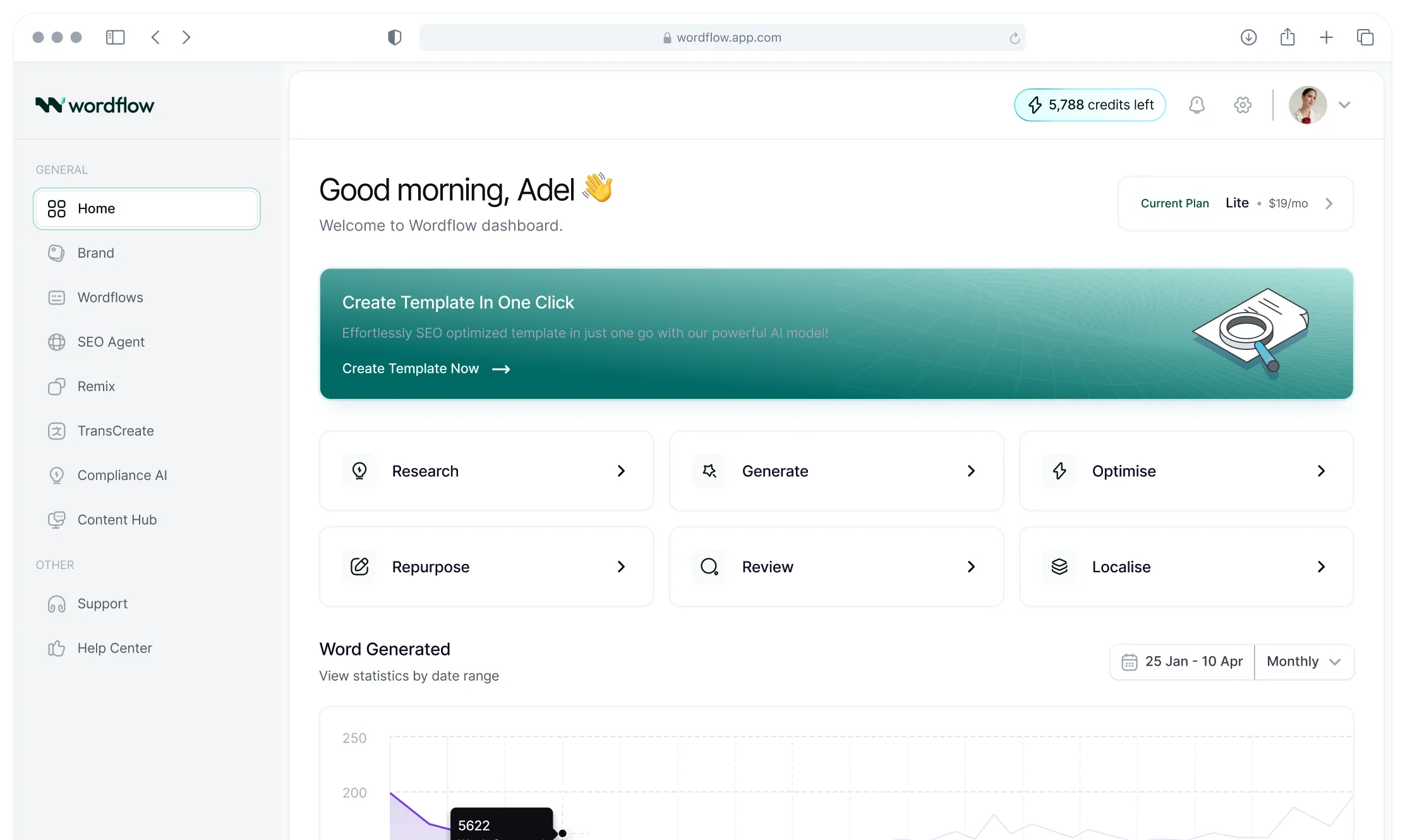
July 24, 2025
The Strategic Marketer's Guide to AI Model Selection: Matching the Right AI to Every Marketing Challenge
Not all AI models are created equal. Discover how top marketers match the right AI to key marketing tasks for better research, content, personalisation, and localisation.

The strategic marketer's guide to AI model selection: Matching the right AI to every marketing challenge
Not all AI models are created equal, especially when it comes to marketing.
With dozens of large language models (LLMs) now available—like OpenAI’s ChatGPT, Anthropic’s Claude, Google’s Gemini, and DeepSeek—marketing teams face a new kind of challenge: selection. It’s tempting to pick a single “favourite” model and apply it to every task, but this one-size-fits-all approach often limits performance and efficiency.
Different AI models have distinct strengths. One may excel at storytelling but stumble on data analysis; another may be great at research but produce bland copy. Choosing the right model for the task can dramatically improve outcomes across research, writing, automation and more.
Smart marketing teams are taking a different approach. They're using AI tool stacks where each model is deployed for its core strengths, creating a dynamic system that delivers superior results across the entire marketing funnel.
Meet the leading AI models marketers should know
Before diving into how to match each model to specific marketing tasks, it’s essential to understand the landscape of AI models currently leading the industry. Each model comes with distinct capabilities, tone preferences, memory, reasoning strengths, and context handling, which directly affect output quality in marketing scenarios.
Here’s a quick overview of the top-performing AI models that marketers can leverage today:
By understanding what each model brings to the table, marketers can avoid the “one-model-fits-all” trap and instead build an AI-powered tool stack where each model is applied based on its core strength.
Why model architecture matters
Model architecture governs not just how an AI system processes input, but what it can reliably do. For marketers leveraging generative AI at scale, understanding these architectural dimensions is critical to task-model alignment.
- Transformer design & training scale: While all major LLMs are based on transformer architectures, the implementation details vary significantly. Advanced models like GPT-4o or Gemini 2.5 incorporate cross-modal attention mechanisms, retrieval-augmented generation (RAG), and memory-enhanced modules, enabling superior performance on tasks requiring structured data generation, iterative logic chaining, and multimodal synthesis.
- Context window size: Models such as Claude Opus and GPT-4.5 support context lengths of up to 200K tokens, thanks to optimisations like sliding-window attention and sparse attention mechanisms. This allows them to process and reason over entire content libraries, long-form marketing assets, and large prompt chains.
- Tool use & plugins: Architectures that support external tool invocation, like Gemini 2.5 or GPT-4.5 with tools/browsing, can access real-time web search, code execution, or document parsing APIs via orchestrated agents or plugins. This makes them suitable for live content validation and on-demand data retrieval workflows.
- Fine-tuning & instruction-following: Models like Claude and DeepSeek R2 benefit from multi-stage instruction fine-tuning and preference alignment, resulting in higher compliance with formatting constraints, tone consistency, and domain-specific vocabulary.
Understanding these architectural capabilities enables marketers to move beyond trial and error. Instead of asking, “Which model writes best?”, savvy teams ask, “Which model is architecturally designed for this kind of task?”
The result: more efficient workflows, more reliable outputs, and less frustration when your AI “doesn’t quite get it.”
Let's explore how to match the right AI model to the right marketing challenge.
Key areas where model selection makes or breaks results
Modern marketing teams rely on AI across virtually every aspect of content creation and strategy. But there are eight high-leverage areas where choosing the right model can mean the difference between mediocre and exceptional results:
- Market research & competitive intelligence
- Customer segmentation & personalisation
- Brand voice development & adherence
- Content & SEO audit
- Content adaptation & multi-channel marketing
- Translation & deep localisation
- Long-form creative writing
- Short-form copywriting
Each of these domains requires a unique combination of capabilities, from high-accuracy reasoning and advanced contextual recall to analytical rigour and nuanced cultural sensitivity.
Below, we break down which models excel in which areas and why.
1. Market research & competitive intelligence
An effective marketing strategy requires deep analysis of market trends, competitor positioning, and consumer behaviour patterns. The ideal model should be able to process vast amounts of unstructured data from multiple sources to extract actionable insights that inform strategic decisions.
Recommended: GPT-4.5 or Gemini 2.5 Pro
Test case summary
Objective:
Evaluate how well each model performs when tasked with synthesising competitive intelligence, applying strategic frameworks, and surfacing actionable market insights and go-to-market planning.
Used prompt:
You're a B2B strategist. A startup is launching a remote project management tool for mid-sized tech firms. Analyse Asana, Trello, and Monday.com, then provide a SWOT and key differentiation points. Use recent data with citations.
Outcome summary:
2. Customer segmentation & personalisation
Effective customer segmentation and personalisation are crucial for delivering targeted marketing messages that resonate with specific audience groups. Models used for this task need to understand behavioural, demographic, and psychographic data to craft tailored content and strategies.
Recommended: GPT-4.5 or Claude Opus 4
Test case summary
Objective:
Evaluate the ability of each model to generate meaningful customer segments from given data and develop personalised messaging for each segment.
Used prompt:
Given the following customer data — including age, job role, purchasing behaviour, and interests — create three distinct customer segments for a SaaS productivity tool. Then, write a personalised email introduction for each segment that highlights relevant benefits and speaks to their specific pain points.
Outcome summary:
3. Brand voice development & adherence
Developing and maintaining a consistent brand voice across all content requires models that understand nuance, personality, and can adapt to various contexts while preserving core brand essence.
Recommended: Claude Opus 4
Test case summary
Objective:
Evaluate how it supports brand voice development and maintenance by first creating a brand voice guide, then applying it to different content types (web copy, email, and social posts) while preserving consistency.
Used prompt:
Act as a brand strategist. First, develop a concise brand voice guide for a fictional modern lifestyle brand targeting a young, socially conscious audience. Include tone, language style, and personality traits. Then, use that guide to rewrite a homepage headline, an email introduction, and a promotional Instagram caption—all tailored to reflect the brand voice.
Outcome summary:
4. Content & SEO audit
An effective content strategy depends on regular audits to identify gaps, optimise on-page SEO, and ensure alignment with search intent. The right AI model should evaluate tone, keyword usage, metadata, readability, and competitor content, while also offering optimisation suggestions backed by SEO best practices.
Recommended: Deepseek R1 or Perplexity Pro
Test case summary
Objective:
Evaluate which model performs best at delivering structured results with key issues and optimisation opportunities per URL. The test should involve conducting a combined technical and content audit across a full website, identifying structural issues, SEO weaknesses, and content gaps across multiple URLs, and then returning prioritised, actionable recommendations.
Used prompt:
Scrape all indexable URLs from example.com and run a combined technical and content SEO audit. Check for broken links, missing alt attributes, duplicate metadata, and thin or underperforming content. Return structured results with key issues and optimisation opportunities per URL.
Outcome summary:
5. Content adaptation & multi-channel marketing
Transforming a single piece of content into tailored formats for blogs, newsletters, social media, and ads requires models that can adapt messaging to each channel’s audience, format, and tone, without losing the original intent or core idea.
Recommended: GPT-4o or Deepseek R2
Test case summary
Objective:
Assess each model’s ability to adapt a long-form blog article into multiple short-form, channel-specific assets without losing strategic clarity, tone, or message.
Used prompt:
Take the following 1,200-word blog article about digital transformation in the healthcare industry and repurpose it into: (1) a LinkedIn post, (2) three email snippets for a nurture sequence, and (3) a 5-part Twitter thread. Each output should maintain the key message but be tailored to the platform's tone and audience expectations.
Outcome summary:
6. Translation & deep localisation
Effective localisation isn’t just about language, it’s about cultural context, tone, and audience expectations. Selecting a model that handles not only multilingual output but also cultural nuance can make or break international campaigns.
Recommended: Claude Sonnet 4 or Opus 4
Test case summary
Objective:
Evaluate how well different models can collaboratively deliver localised, brand-consistent content in another language, adapted for a regional audience while maintaining the tone and intent of the original.
Used prompt:
Translate and localise this English landing page headline and subhead into Thai. Ensure the tone remains persuasive and appropriate for a marketing audience in each market. Then rewrite a short call-to-action paragraph in a way that aligns with local preferences, idioms, or cultural expectations.
Outcome summary:
Always validate final content with native speakers or in-market teams when precision matters.
7. Long-form creative writing
For in-depth articles, whitepapers, case studies, and thought leadership pieces, you need models that can maintain narrative coherence across thousands of words while delivering original insights and compelling storytelling.
Recommended: GPT-4.5 or Claude Opus 4
Test case summary
Objective:
Evaluate how well each model can develop a coherent, strategic, and engaging 1,500+ word thought leadership article, balancing originality, structure, and storytelling, for a professional audience.
Used prompt:
Write a 1,500-word article titled ‘Reimagining the Remote Workplace: Beyond Productivity Metrics’. Explore the limits of productivity as a success metric, introduce alternatives like wellbeing and innovation, and include examples from progressive companies. Use an informative, reflective tone for business leaders.
Outcome summary:
8. Short-form copywriting
Crafting punchy headlines, social media posts, and ad copy requires precision and impact in minimal space. Models must balance creativity with conversion optimisation, understanding the subtle psychology behind compelling micro-content that drives action.
Recommended: GPT-4o or Gemini 2.5 Flash
Test case summary
Objective:
Test the models’ ability to generate persuasive, concise marketing copy optimised for engagement and conversions across different formats (ads, emails, social media).
Used prompt:
Write 5 variations of a Facebook ad copy promoting a new productivity app. The copies should be punchy, focus on key benefits, and include a strong call to action. Then, create 3 subject lines for an email campaign introducing the app, and 5 Twitter post ideas that highlight unique features and user benefits.
Outcome summary:
Choose the best AI for each task
Stop wasting time juggling multiple AI platforms and subscriptions. Wordflow brings the latest models—GPT-4.5, Claude Sonnet 4, Gemini 2.5, Deepseek R2, and more—into one unified workspace, allowing you to switch between them effortlessly based on your needs.
Whether you’re writing marketing copy, analysing data, or tackling technical challenges, each model has its strengths. Instead of being limited by a single platform or paying for several, Wordflow gives you access to the right AI for every task, all from one streamlined interface.
The result? Faster workflows, better outputs, and the confidence that you’re always using the best tool for the job.
Ready to supercharge your AI productivity? Start your free trial at Wordflow today and experience the full power of the AI ecosystem.
Read More
Artifical Intelligence.
Real Results
Get started with Wordflow—the agentic platform built for modern marketers. Start your free 7-day trial today and experience the difference.








